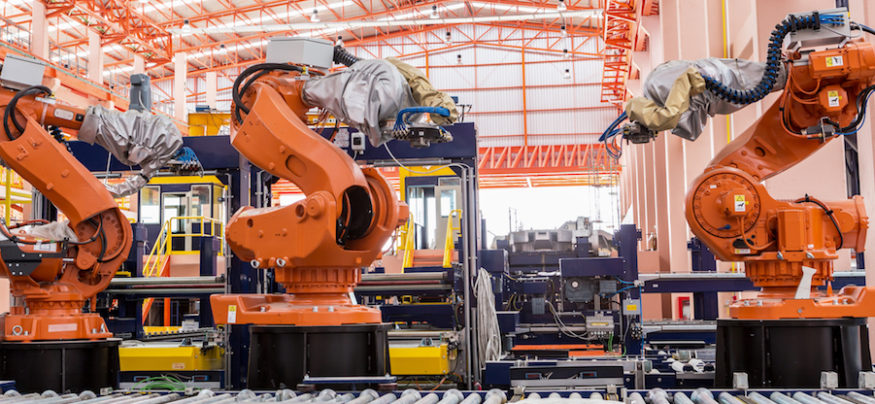
Author: Cao Yuanzheng, Member of the Board at CDI and Chairman of BOCI Research Limited
Creating new demand is a pressing task for China
Labor productivity has been declining since the turn of the century around the world, especially in developed countries. As major technological breakthroughs are hard to achieve, the global economy has entered a new phase that requires the creation of new demand from the new round of technological revolution.
In China, considering demand-supply management from the perspective of the dual-circulation development paradigm, the focus should be on promoting the growth of people's income, especially the income of the low and lower-middle income groups. In the medium term, the focus should be increasing both government and private investment on social infrastructure, such as education and healthcare, laying a solid foundation for the domestic circulation of the new development paradigm. In the long run, the focus should be constantly creating new demand in low-carbon technology field to achieve green development, so as to let domestic circulation be the engine of the dual-circulation development paradigm.
As the tide of globalization grew in strength, China grabbed the opportunities it presented and became the world's largest export-oriented economy. However, as the Chinese economy further expands and industrial upgrading advances, the country is confronted with the same challenge as the global economy.
The long-term downturn of the global economy entails an absolute surplus in Chinese production capacity. Creating new demand is a pressing task for China as well as a global issue. Without new demand, the world might witness prevailing protectionism that benefits one at the expense of others. A salient example is the Sino-US economic and trade conflict which was just an outcome of US protectionist policies. Even the adoption of extremely loose fiscal policy and monetary policy has done little to stimulate demand, while sending asset prices skyrocketing.
In this context, the only way out is to create new demand. Green development can create enormous market demand not only in investment but also in consumption. According to estimates by the International Renewable Energy Agency, every dollar of investment in renewable energy will get eight dollars in return. The transformation of the global energy structure will increase global GDP by $100 trillion and double the number of employment positions in relevant industries by 2050.
China formally joined the Paris Agreement in 2016 and announced in 2020 that it will strive to peak its carbon dioxide emissions before 2030 and achieve carbon neutrality before 2060. To achieve the goal of keeping the global temperature rise well below 2 C above pre-industrial levels, a total of 100 trillion yuan ($15.5 trillion) of investment is needed for China's energy mix transformation by 2050, and the amount will reach 138 trillion yuan if the goal is well below 1.5 C above pre-industrial levels.
It's worth noting that compared with high-tech products such as chips, China has no technological generation gap with the developed nations in technological support for green development, therefore it can play a leading role. Green development requires revolutionary changes both in production patterns and people's lifestyles. Green development therefore should become the new direction and focus of demand-side management.
Domestically, China has just completed the building of a moderately prosperous society in all respects. Although China has eradicated absolute poverty, the low and lower-middle income groups-with a combined population of nearly 1 billion-still account for the bulk of the country's total population, a big difference from that in developed nations. Therefore, increasing the incomes of the low and lower-middle income groups should be put on top of the agenda in demand-side management before 2035.
To this end, accelerating urbanization by giving rural residents more job opportunities in cities is one of the most effective means, which has been proven by the experience of more than 40 years of reform and opening-up. The service sector has become China's largest industry alongside rapid urbanization over the past decade, which has led to the rapid growth of new job opportunities in cities. In 2010, an additional 1 percentage point of GDP growth could result in a net gain of up to 1.2 million jobs in China while now it could result in 2 million new jobs. The ever-increasing demand for labor force promoted a continuous increase in minimum wage in all provinces. Therefore, over the past 10 years, the growth rate of per capita disposable income in China's rural areas-reaching as high as 10 percent in some years-has been higher than the GDP growth rate during the same period.
During the 14th Five-Year Plan period (2021-25), on the one hand, China should quicken the process of urbanization to create more job opportunities to increase migrant workers' disposable incomes and reform rural land-use and ownership policies to increase their property incomes. On the other hand, the new focus on demand-side management will mean greater efforts to address difficult structural issues, such as fairer income distribution and improving the social safety net, to tap their spending power.
In the meantime, compared with the low and lower-middle income groups, China's higher-middle to high income groups, whose combined population has surpassed 400 million, has strong consumption power. What these groups need are high-quality services, such as children's education, medical and healthcare and elderly care services. Given that the population of this group has exceeded the US population and is expected to double within the upcoming 15 years to reach 800 to 900 million, exceeding the combined population of Europe, the US and Japan, China will become the country with the largest middle-income group by then.
Last but not least, demand-side management should also include measures aimed at stabilizing foreign trade and foreign investment. The Chinese economy has been deeply integrated into the world economy, with more intertwined interests than ever before. The Chinese market cannot be separated from the international market and external circulation could boost domestic circulation. This should be an important aspect of demand-side management.








